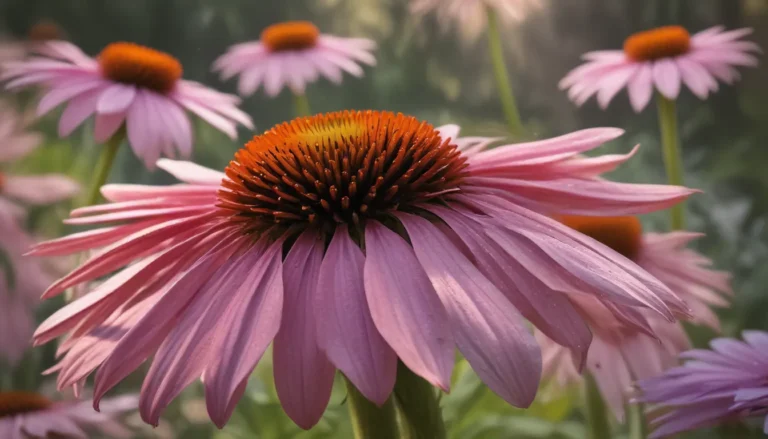The pictures we use in our articles might not show exactly what the words say. We choose these pictures to make you interested in reading more. The pictures work together with the words but don’t take their place. The words still tell you the important facts.
Grape Ivy, known scientifically as Cissus Rhombifolia, is a captivating plant renowned for adding a touch of sophistication to any indoor or outdoor space. Despite its misleading name, this vine-like beauty possesses a myriad of intriguing secrets waiting to be uncovered. From its origins in tropical regions to its exceptional growth patterns, Grape Ivy has garnered admiration from both houseplant enthusiasts and gardeners. Join us in exploring the enchanting world of Grape Ivy as we unveil some fascinating facts that are sure to pique your interest.
Key Takeaways:
- Grape Ivy, while not a true ivy, is a versatile and popular houseplant known for thriving in low-light conditions and boasting air-purifying properties. It bears small, grape-like fruits and has a rich history of medicinal use.
- Grape Ivy can thrive indoors or outdoors in warmer climates with its rapid growth and easy maintenance, making it an ideal choice for both novice and experienced plant enthusiasts.
Grape Ivy: A Closer Look
Grape Ivy: Beyond the Name
Contrary to its moniker, Grape Ivy (Cissus Rhombifolia) is not a real ivy but a member of the grape family originating from Brazil and the Caribbean. Its recognizable leaves bear a resemblance to English ivy, hence its common title.
Lush Green Delight: A Popular Houseplant
Grape Ivy has gained popularity among indoor gardening aficionados due to its appealing foliage and minimal care requirements. Its cascading vines and vibrant green leaves make it a charming addition to hanging baskets or plant stands.
Thriving in Dim Lights: A Beacon of Adaptability
One of Grape Ivy's standout features is its ability to flourish in low-light settings. Adaptable to areas with indirect sunlight, it is an excellent choice for spaces with limited natural light such as offices or rooms with minimal exposure.
The Wonder of Grape Ivy
An Air-Purifying Marvel
Like many houseplants, Grape Ivy excels in purifying the air by eliminating toxins like formaldehyde and benzene. By incorporating this plant into your indoor environment, you can breathe easier and enjoy a healthier atmosphere.
Berry-Like Beauties
True to its name, Grape Ivy produces small, berry-like fruits that transition from green to dark purple or black upon ripening. While not typically consumed by humans, these fruits are a treat for birds that may stumble upon them.
Outdoor Oasis
Although commonly cultivated indoors, Grape Ivy thrives in outdoor settings with milder climates. Ideal for subtropical or Mediterranean regions, it can be grown in gardens or utilized as a ground cover to enhance outdoor spaces.
Rapid Growth and Rich History
With the right conditions, Grape Ivy demonstrates fast growth potential, boasting vines that can extend several feet in length. Regular pruning is essential for managing its growth and preserving its desired shape. Additionally, Grape Ivy has a longstanding tradition of medicinal applications, offering potential benefits for various health ailments like rheumatism and digestive disorders.
Conclusion
Grape Ivy, or Cissus Rhombifolia, stands out as a captivating botanical marvel that brings both aesthetic appeal and practical benefits to any indoor or outdoor setting. Its vining nature, vibrant foliage, and adaptability to diverse conditions have made it a cherished choice among plant enthusiasts of all levels. Whether you seek to elevate your décor or cultivate a verdant paradise, Grape Ivy promises to impress with its numerous advantages and effortless care regimen.
From its air-purifying prowess to its resilience against pests, Grape Ivy offers a range of benefits that justify its inclusion in any plant collection. Suited for beginners and seasoned plant guardians alike, its versatility and low-maintenance allure make it a standout selection. Don't overlook the enchanting allure of Grape Ivy—it's a gem waiting to enrich your botanical landscape.
FAQs
- How do I care for Grape Ivy?
-
Grape Ivy thrives in bright, indirect light and well-draining soil. Allow the soil to partially dry between waterings, and practice regular pruning to manage growth.
-
Can Grape Ivy be grown indoors?
-
Yes, Grape Ivy adapts well to different light conditions indoors. Ensure adequate sunlight exposure or artificial lighting for optimal growth.
-
Does Grape Ivy require support for its vines?
-
While not essential, providing trellises or stakes can guide its growth and enhance its visual display.
-
Is Grape Ivy toxic to pets?
-
Unfortunately, Grape Ivy is toxic to cats and dogs if ingested due to the presence of calcium oxalate crystals. Keep it out of reach of pets and children.
-
Can Grape Ivy be propagated?
- Yes, Grape Ivy can be easily propagated through stem cuttings. Place healthy cuttings with multiple nodes in water or moist soil for successful rooting.
Whether you're mesmerized by Grape Ivy's allure or simply seeking to delve into the fascinating realm of indoor gardening, exploring the world of botanical wonders is an enriching journey. Elevate your plant care experience with essential tools like a reliable soil pH meter, and unlock the beauty of vine plants like the captivating Loveinapuff.
We are committed to delivering accurate and engaging content that resonates with plant enthusiasts worldwide. Each insight on our platform is contributed by individuals like you, ensuring a diverse and informative repository of knowledge. With meticulous editorial oversight, we guarantee the utmost reliability and authenticity in every fact shared. Trust in our dedication to quality as you embark on a journey of discovery and enlightenment through the world of plants.






